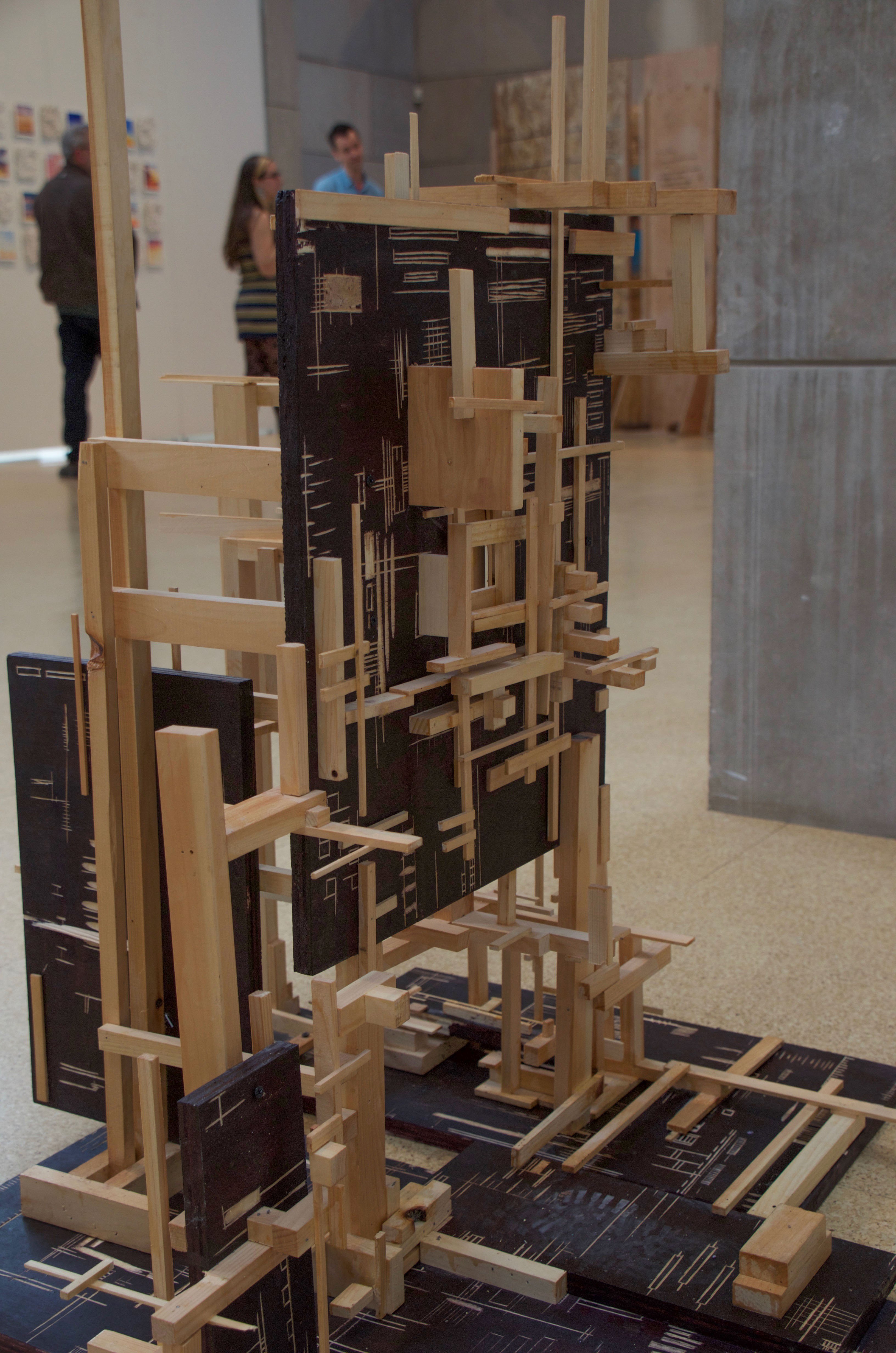
Dani Smotrich-Barr, Photo Editor
This week was the second in a series of art thesis exhibitions that will be presented at Zilkha Gallery this spring. Seniors Cayla Blachman, Alli Fam, Paul Franceschi, Julian Johnson, Shirley See Yan Fang, and Bastian Silvestre presented pieces exploring themes of the media and the environment and personal relationships with place, body, and family.
Fam’s thesis, “Podcast Playground,” is a participatory piece that asks the viewer to follow a series of steps, through which they physically interact with audio from Fam’s podcast, “Unwind the Line.” Besides various audio clips from her podcast, the piece consists of a menagerie of objects made from strips of wood, ranging from wall-mounted sculptures to exercise-machine-like equipment, to a swing hanging from a rope.
“We always listen to podcasts while we’re folding laundry or driving,” Fam said of the project’s inspiration. “What if we listen to podcasts and we actually feel the way the characters are feeling?”
Fam designed the motions to both mirror the podcast’s content and to, at times, stand in contrast to it.
“There’s this one about tourism and how tourism can be problematic in the sense that you come in, especially as a tourist in the Caribbean, and you’re like, ‘I deserve this vacation, it’s all for me, it’s all exotic, it’s all about the beach,’ and you don’t think about the people who live there.” Fam said. “And so in that one, you’re very much in this fantasy world, and you realize as you go through it that you’re this tourist who’s not caring about the locals, just like, taking pictures of your tan legs, and as you go on, the episode is critiquing almost exactly what you’re doing.”
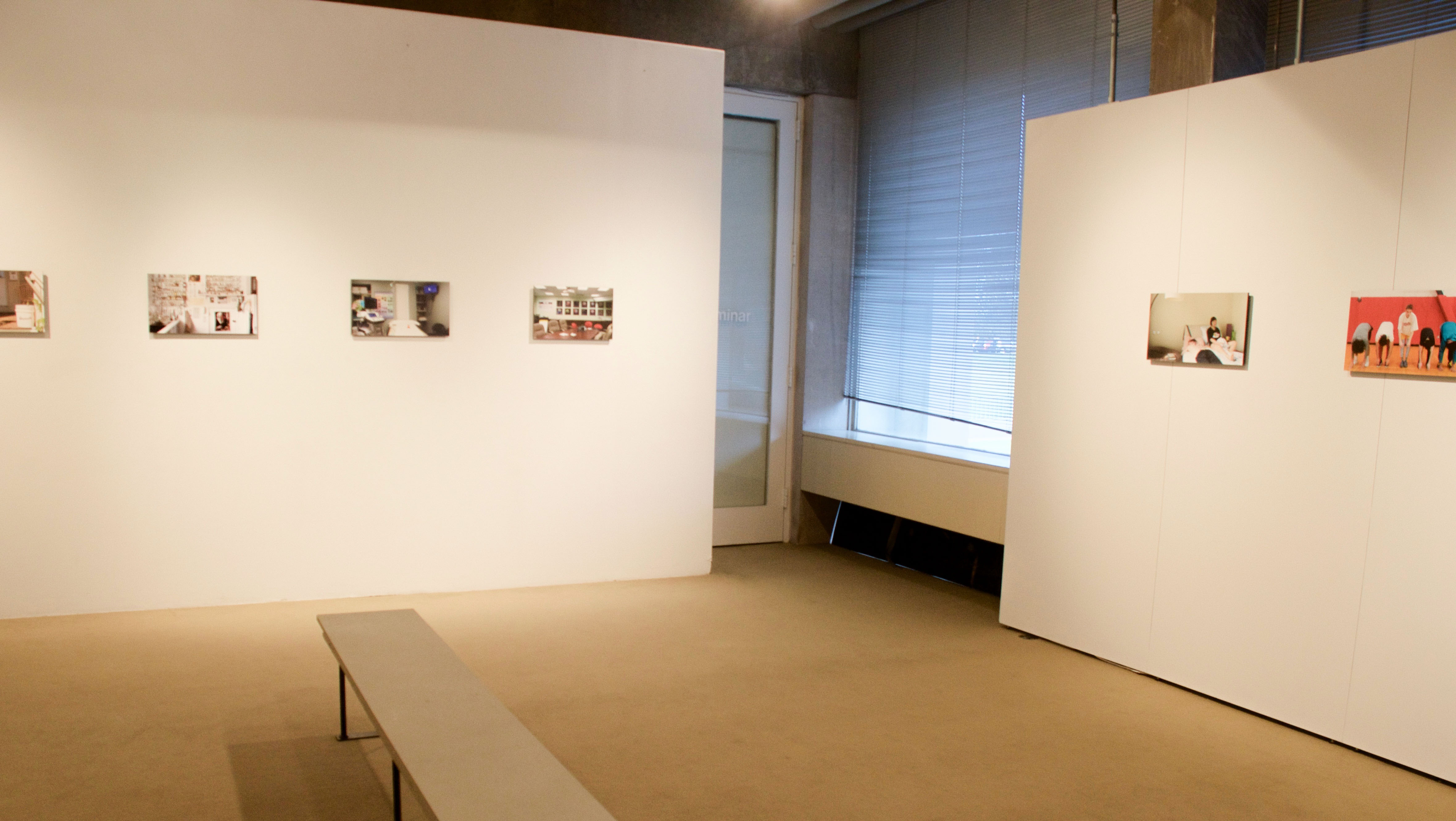
Dani Smotrich-Barr, Photo Editor
Johnson’s photography thesis, “Even You, Metal Back,” focuses on his experience living with Marfan Syndrome, a genetic disorder that affects the body’s connective tissue. The photographs range from images of utilitarian hospital rooms that emanate emotional distance to more warm and intimate photographs—a still of a cluttered porch in the sun, wrists clenched in prayer.
“I remember reading about Marfan Syndrome in my high school biology class, the textbook featuring a picture of a skinny boy looking like a deer in headlights.” Johnson said. “Since getting diagnosed at age five, I’ve been dissatisfied with the cold, clinical imagery surrounding the connective tissue disorder. ‘Even You, Metal Back’ is an exploration of physical pain, mental health, religion, and healing–a self-portrait, unearthing anxieties around corporality while living with this chronic condition.”
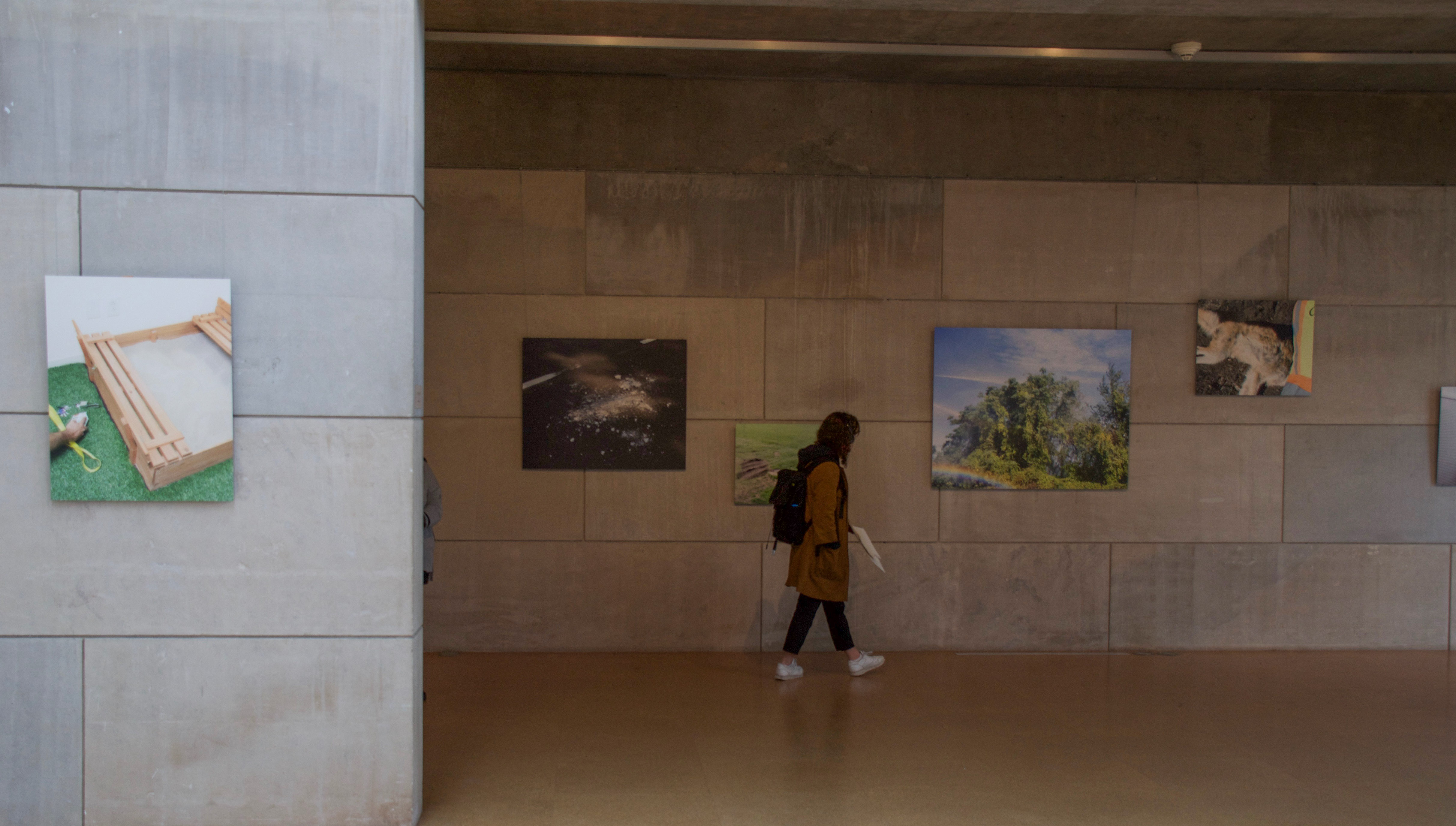
Dani Smotrich-Barr, Photo Editor
Franceschi’s photography thesis, “Frontcountry Principles,” is a quiet but poignant exploration of the relationship between natural and human environments, with thoughtful attention to compositional detail resulting in vendettas that are both beautiful and slightly eerie.
“One of the more expected ways to engage with the environment through images might be to highlight some kind of devastation that humans have wrought upon the natural world,” Franceschi said. “In my work, I’m trying to identify a more subtle but possibly just as worrying impulse: a covering-of-tracks, a hidden curation and regulation of space, a totalization of the landscape. Rather than focusing on a conflict between the natural and human worlds, in my photos I’m trying to frame a kind of virtual reality of landscape, where images of the environment are illusory, malleable, and almost uncanny.”
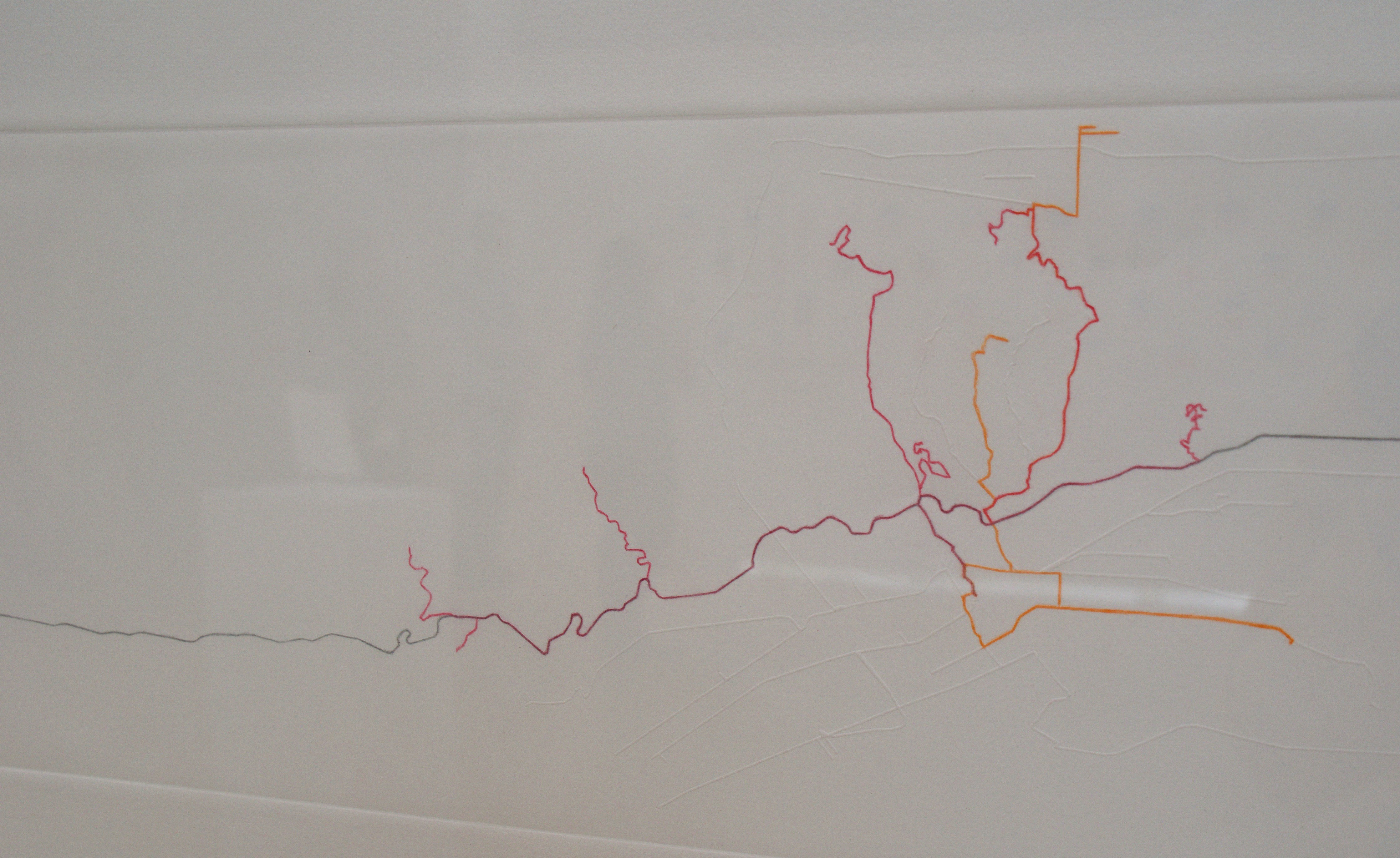
Dani Smotrich-Barr, Photo Editor
Blachman’s thesis, “Where To,” consists of two different components. The first is a series of maps with threads classifying certain areas, for example where to eat and where to smoke weed. The second is a wall that interspersed small paintings of the sky at various times of day with clay squares out of which popped flowers and succulents. Both pieces bring glimpses of place but in a way that feels very transient or fleeting.
“My work is about the way we develop personal relationships to a place, and the way that the passage of time and memory then affect that relationship.” Blachman said. “I used my childhood home as a starting point, using my memories and impressions of home as a vehicle for visually representing my experience with that place. I was really interested in the idea of a personal cartography, but also in how that personal experience can become relatable, as well as represented in a more abstract way.”
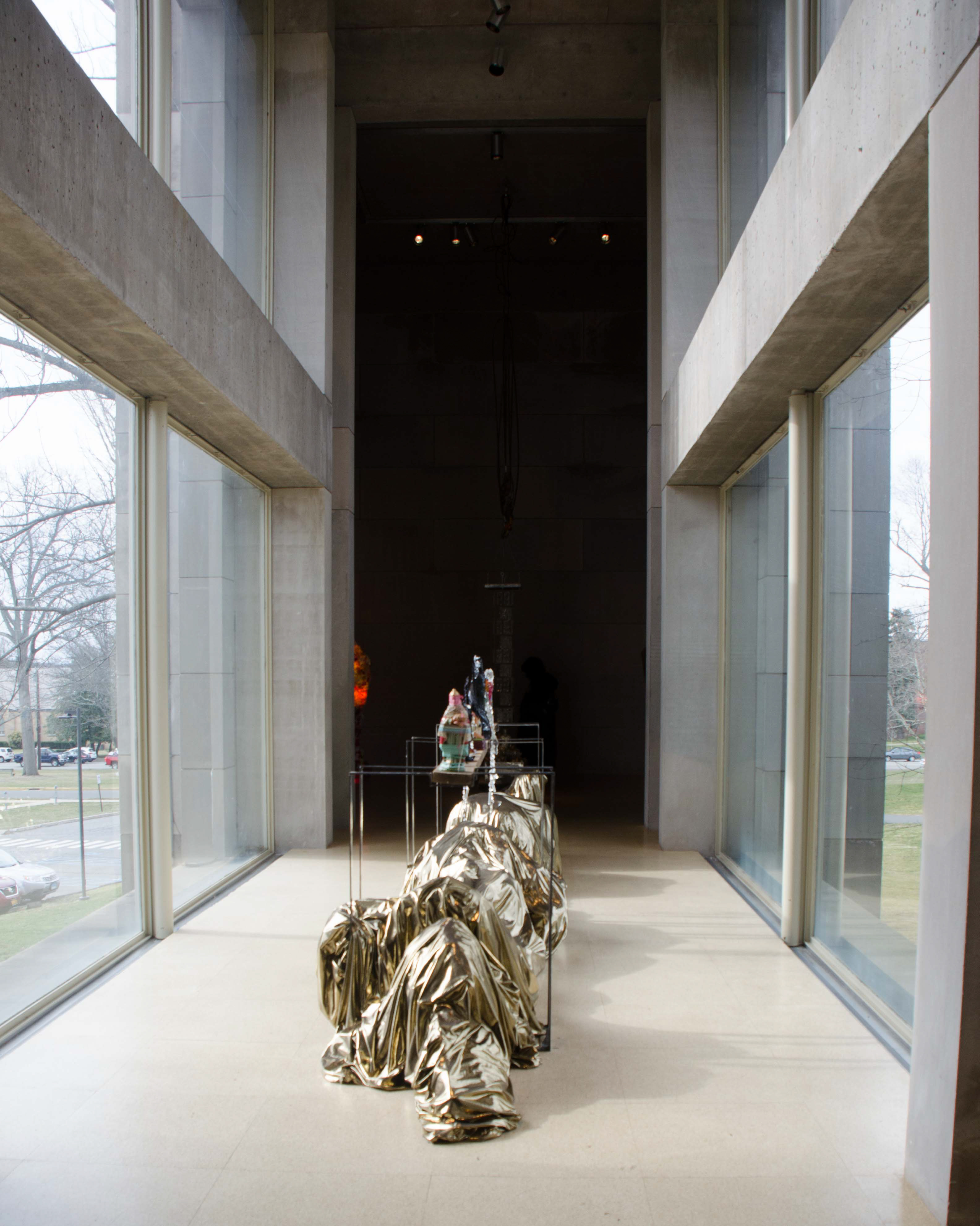
Dani Smotrich-Barr, Photo Editor
Silvestre’s thesis, “Aguantamos,” is an elaborate grouping of sculptures that occupies the South Gallery of Zilkha. Upon entering the hallways, one is greeted by a long wooden table with metal legs, topped with altered thrift-store knick-knacks and with an ambiguous, animal-like form underneath that is covered by a shiny golden material. Small tables with delicate lacework stand off to the side. In the South Gallery’s main room, metal hooks extending from the ceiling hold a delicate mirrored chandelier-like form over a makeshift altar. Other pieces in the room also gesture to church-like elements; including a copse of roughly painted wooden posts in one corner and a piece constructed of scores of tiny, back-lit flowers in another.
Fang’s thesis, “做得好,” consists of eighteen portraits of first-generation college students and their respective mothers, painted onto wooden pallets that stand vertically in a circle that the viewer is able to walk into. On the back of each pallet, handwritten notes by each student and their parent are burned into the wood.
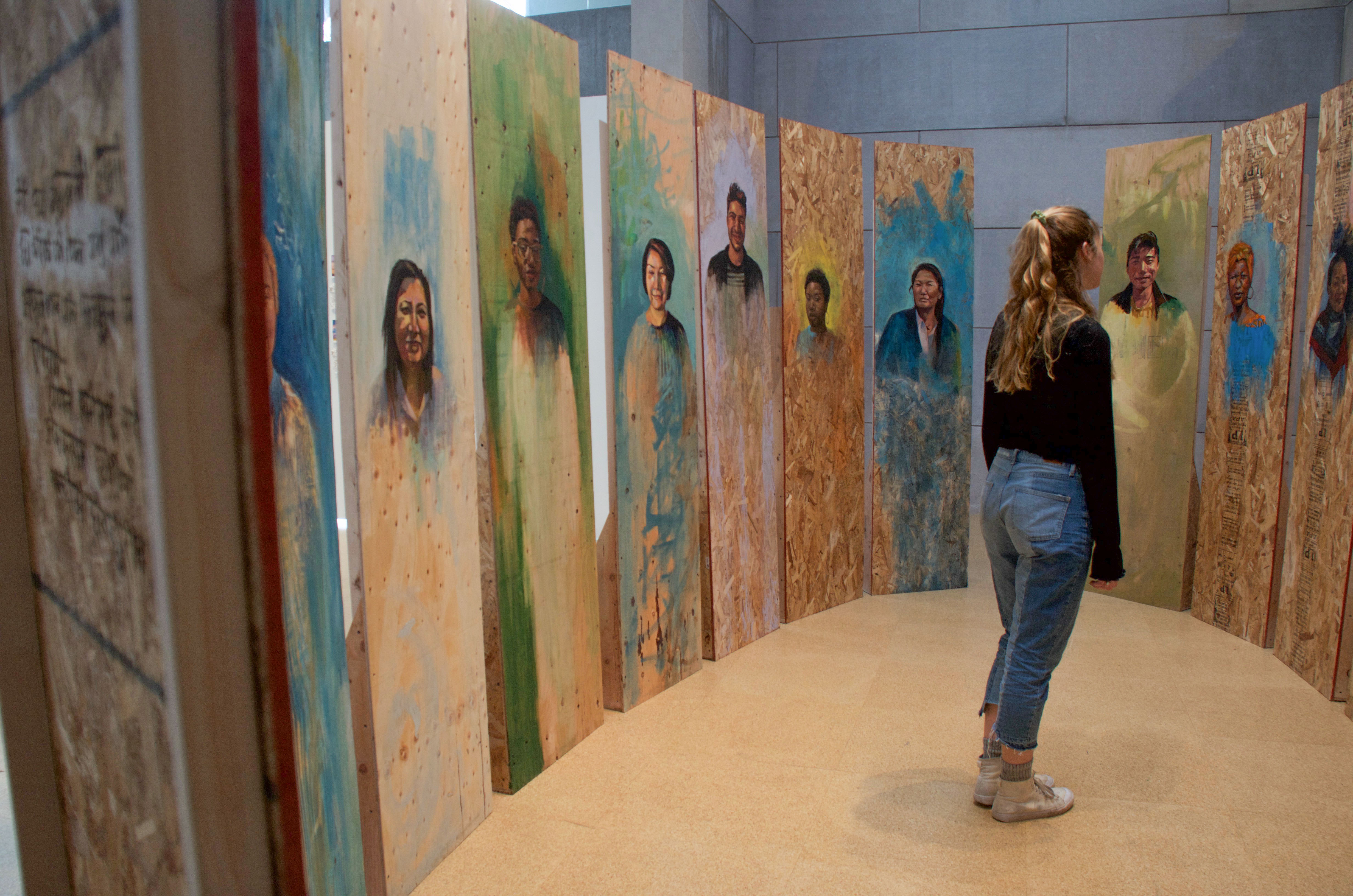
Dani Smotrich-Barr, Photo Editor
“I hope that the viewer can first explore and read the external surfaces before they discover that there are entrances to the internal space, where they can witness the people who wrote the words behind the portraits.” Fang said. “I hope those who can relate feel empowered by my work. I hope the viewers can experience the powerful presence of the voices I want to uplift.”
This week’s theses will be in Zilkha through Sunday, March 7. The next set theses will be on display from April 9 to April 14 and will feature work by seniors Emma Cantor, Olivia Gorman, Ona Lepeska-True, Toby Meyer, Dominique Nunnally, and Madeleine Sargent.
Dani Smotrich-Barr can be reached at dsmotrichbar@wesleyan.edu.
- Dani Smotrich-Barr, Photo Editor

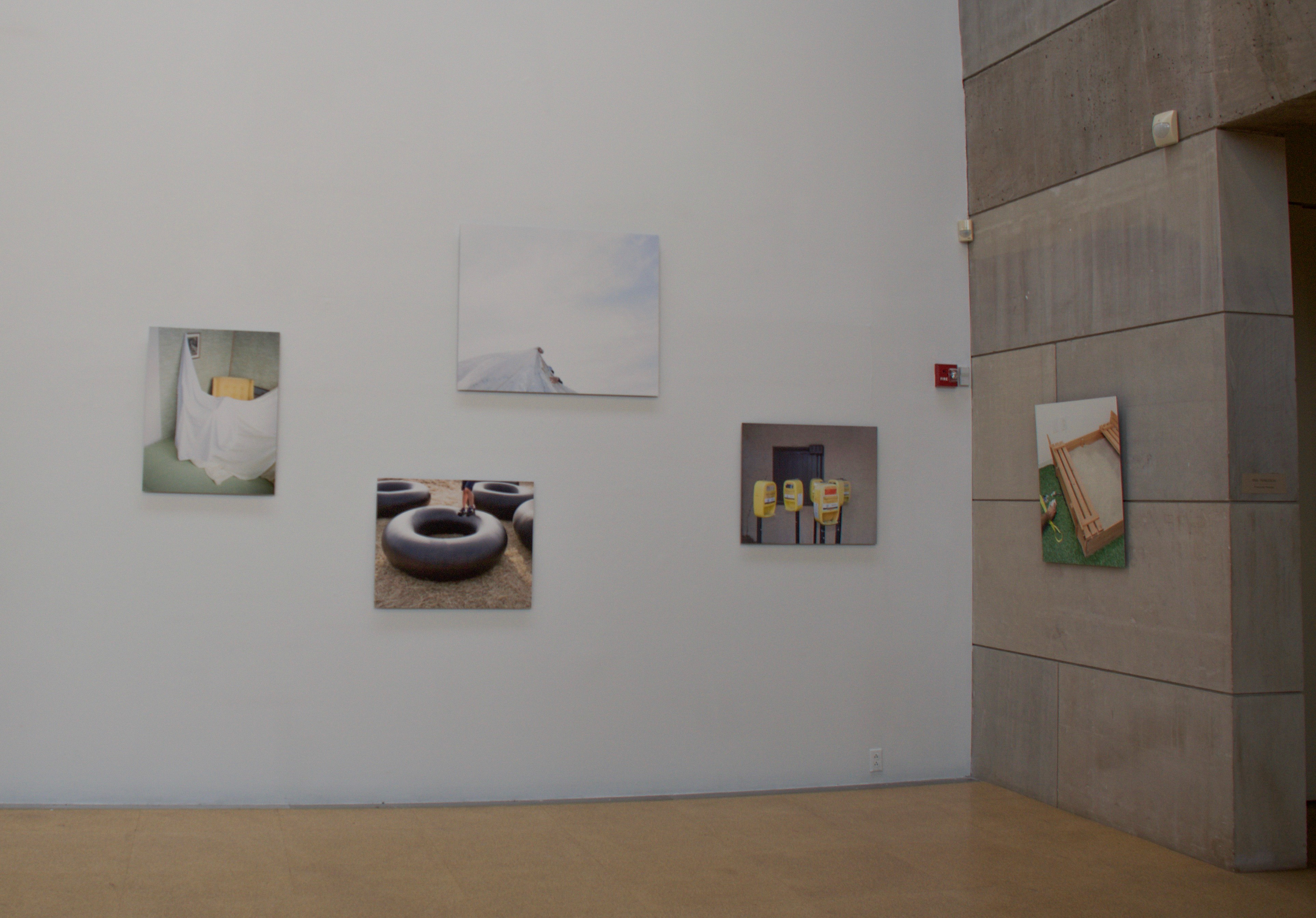
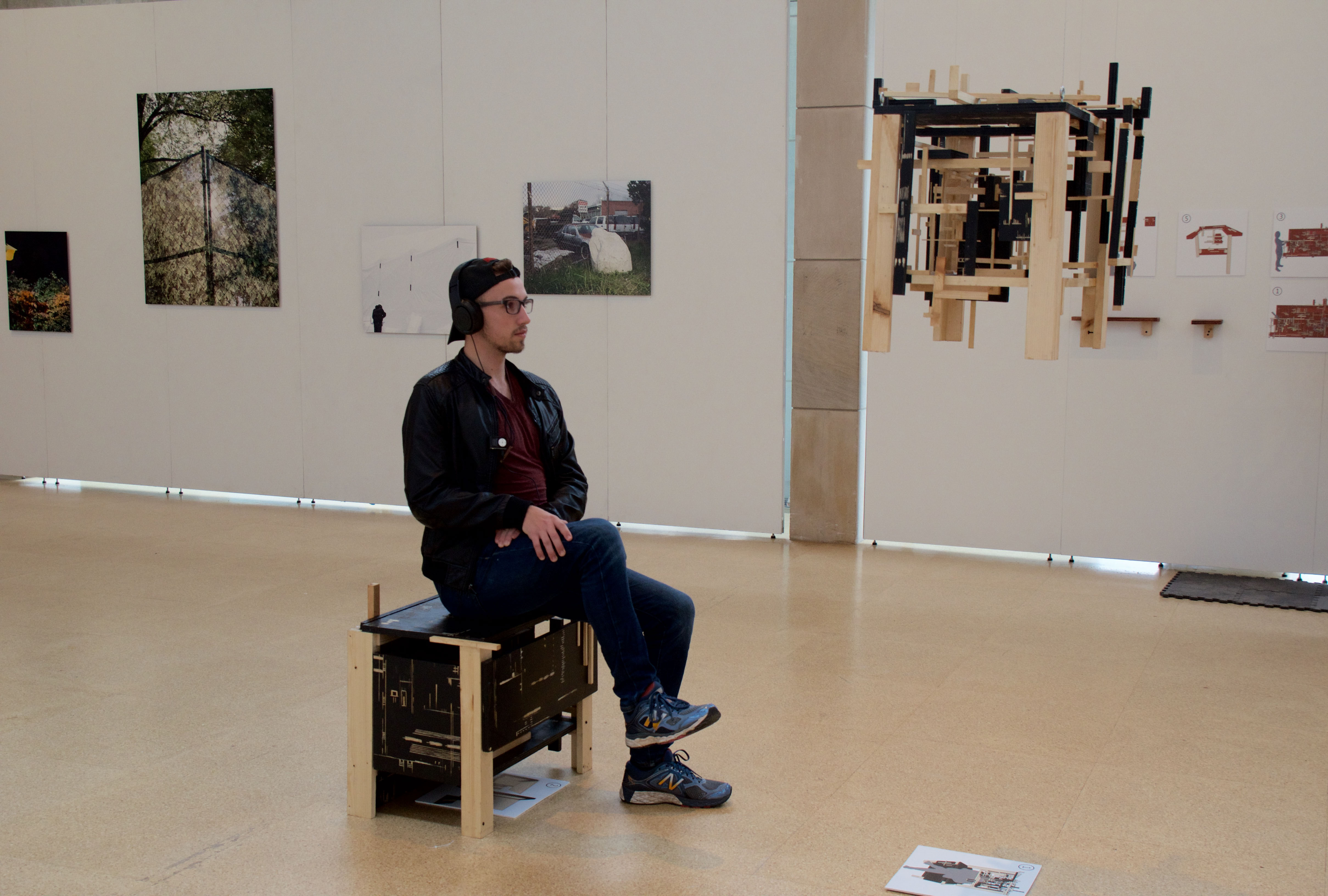
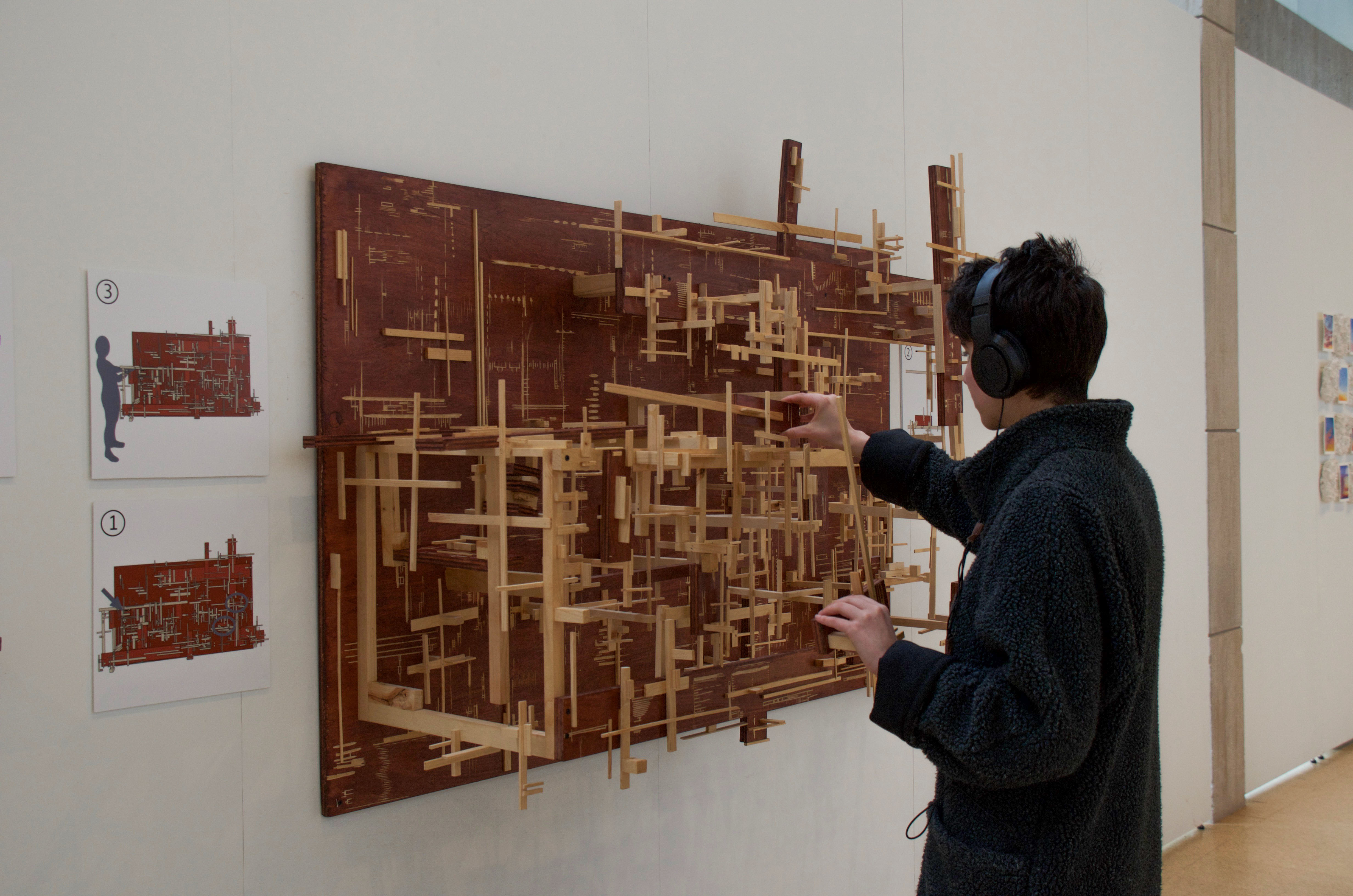
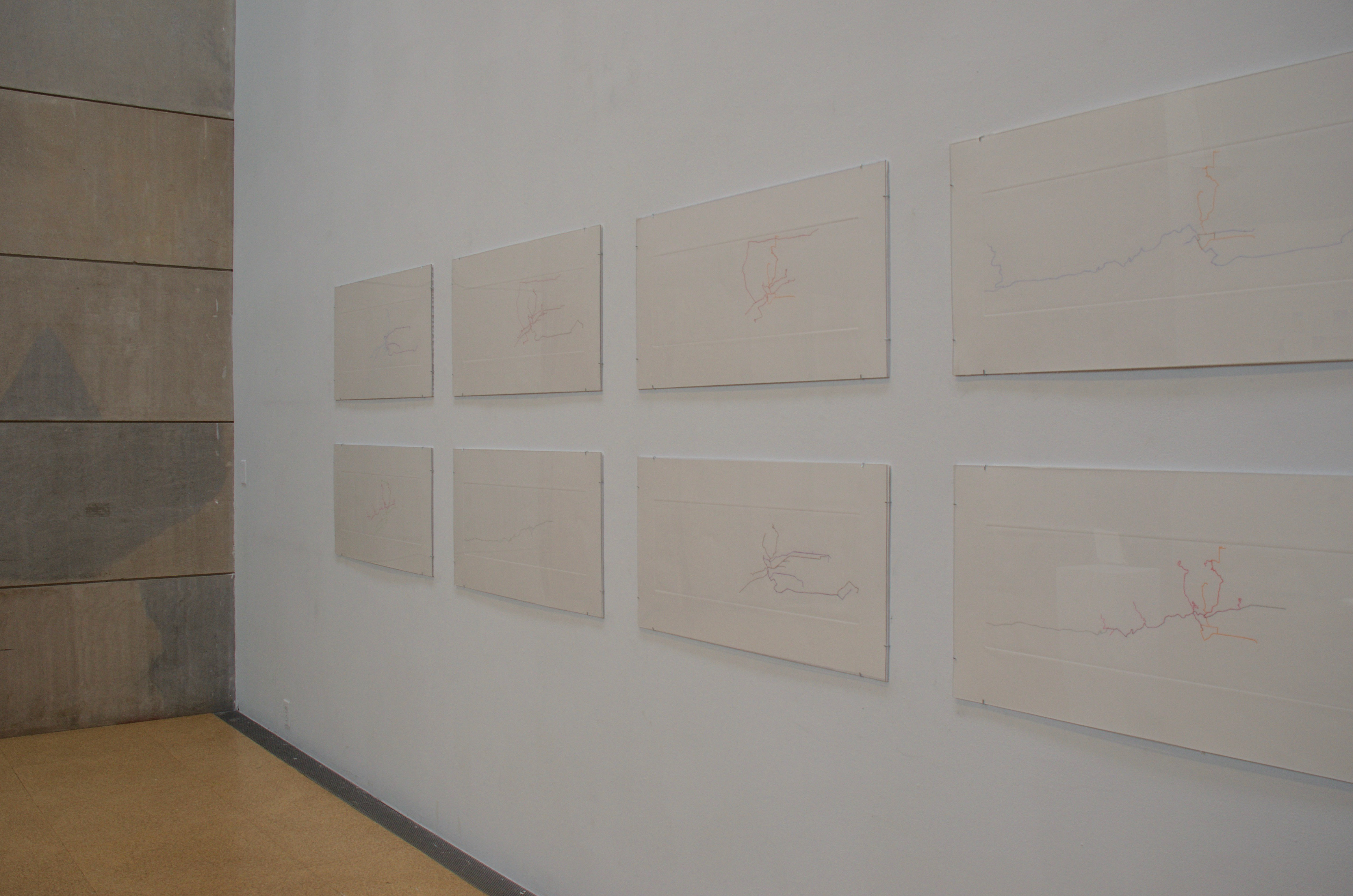
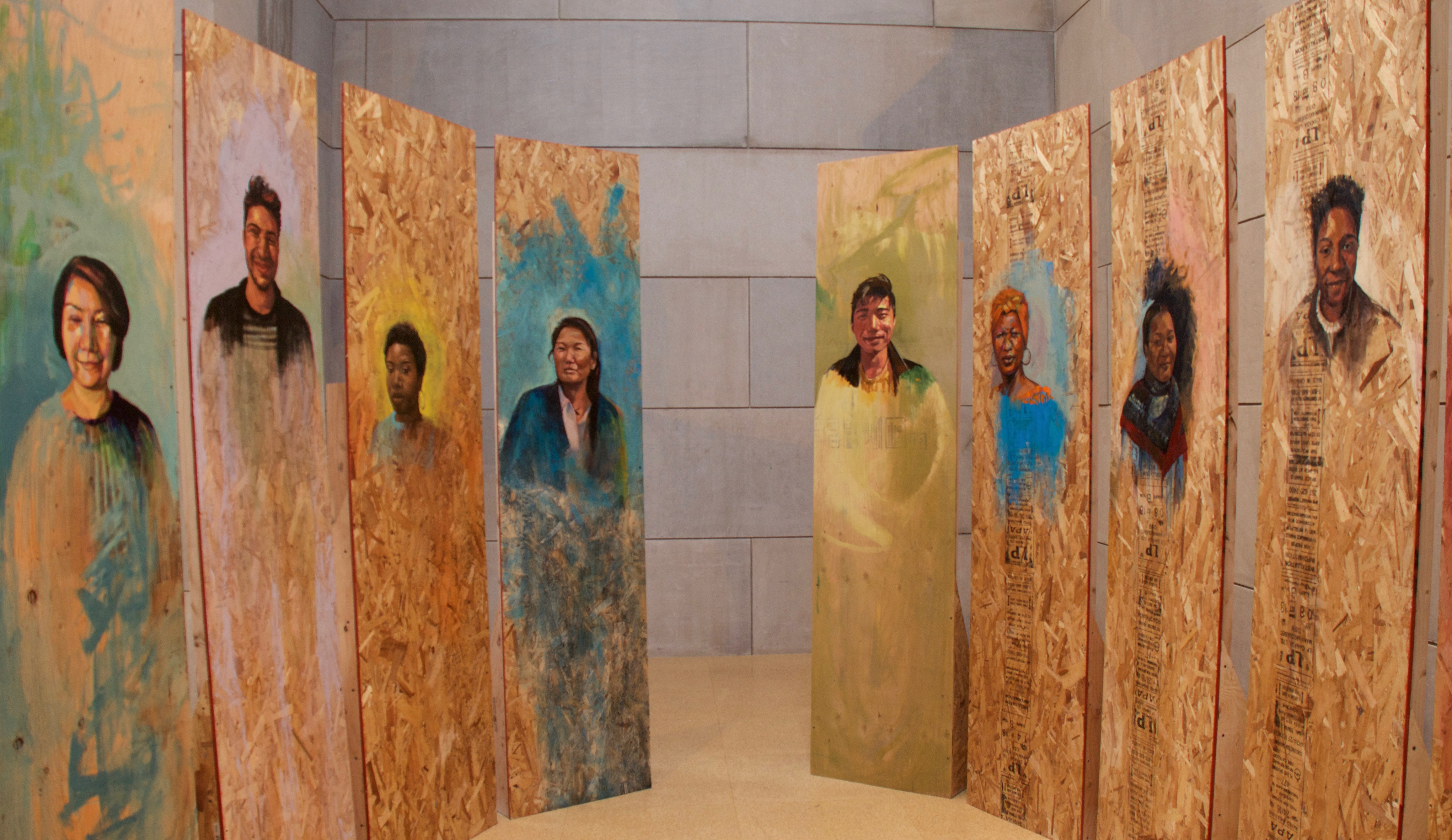
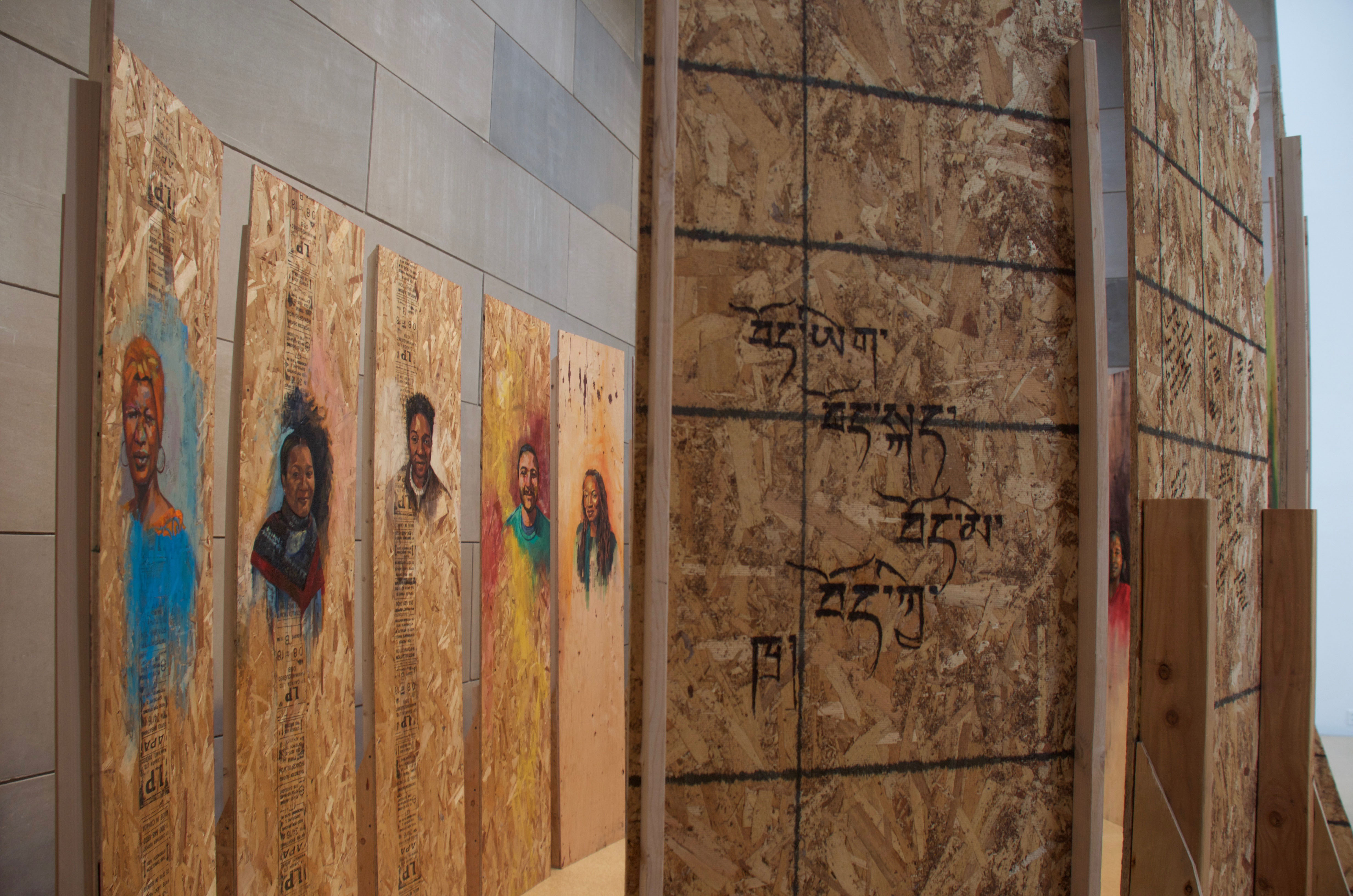
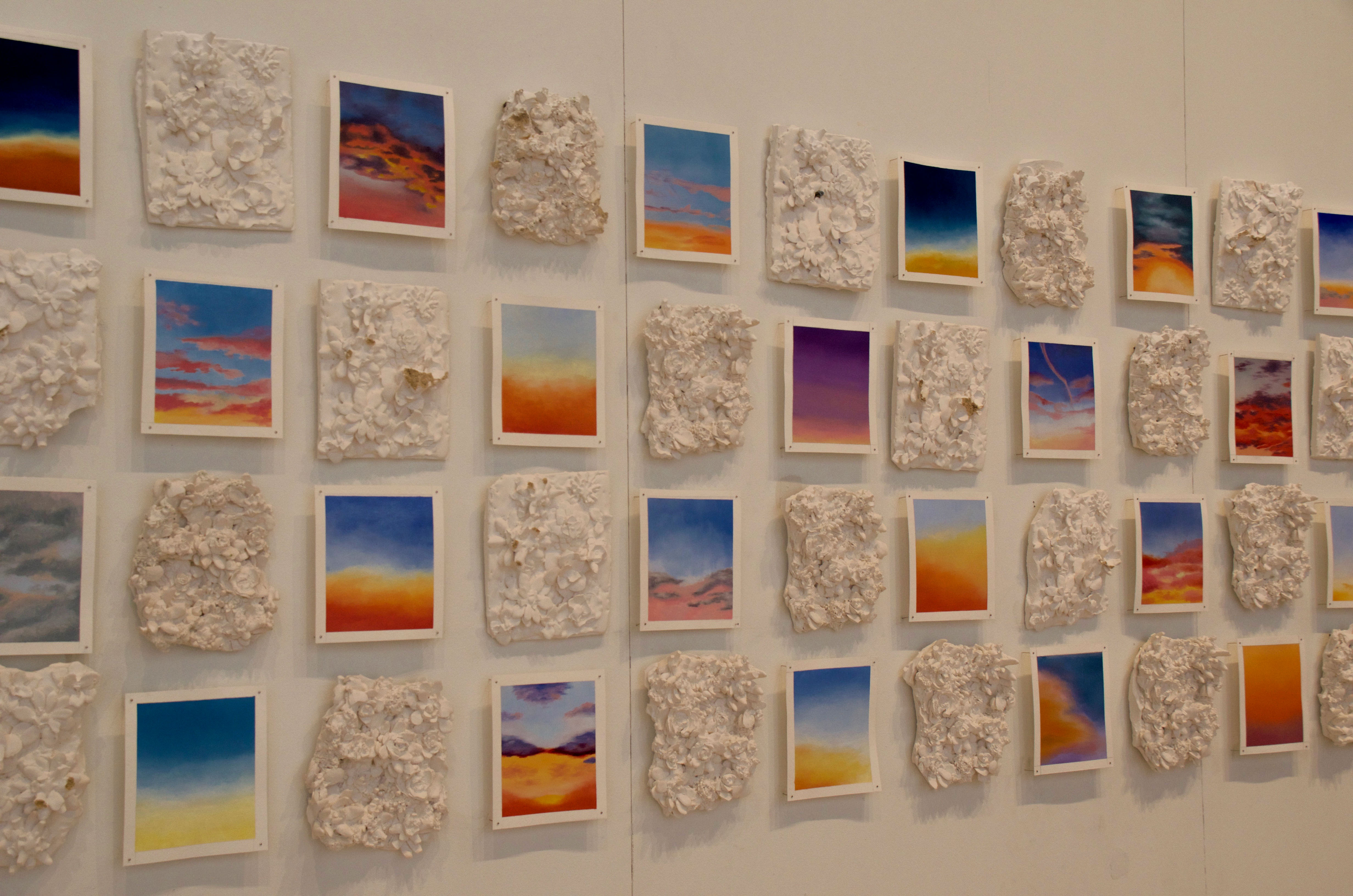
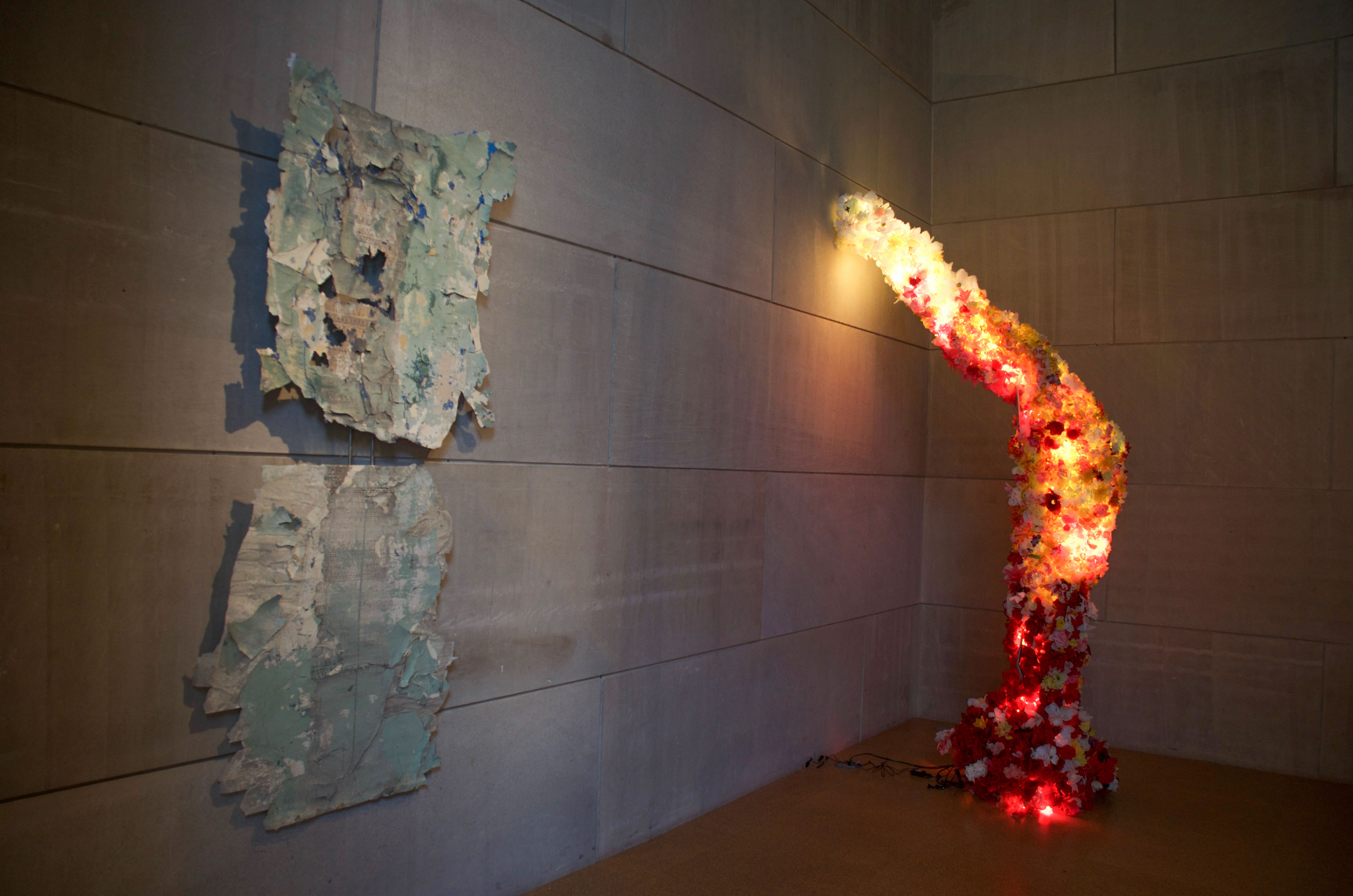
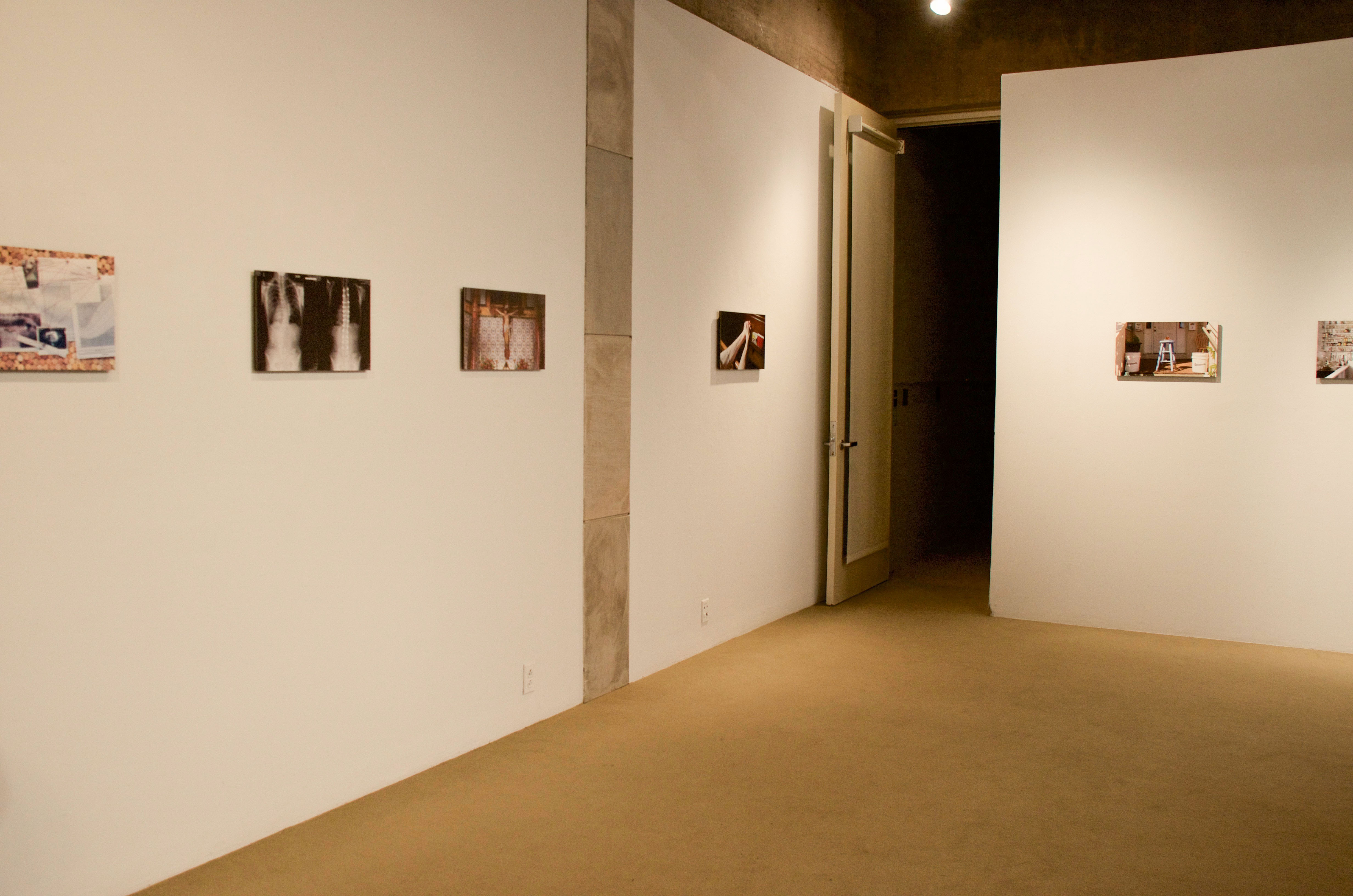
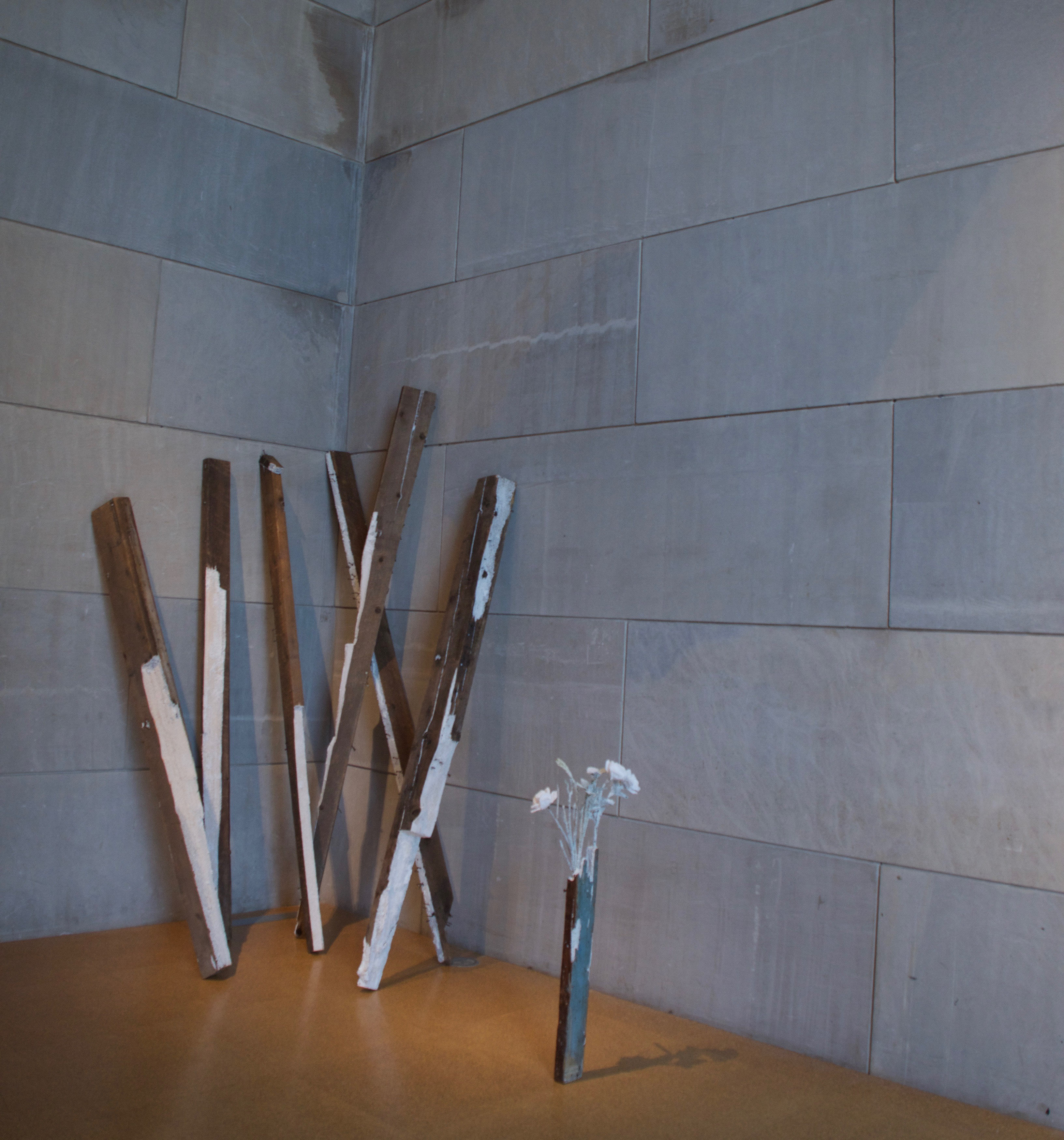
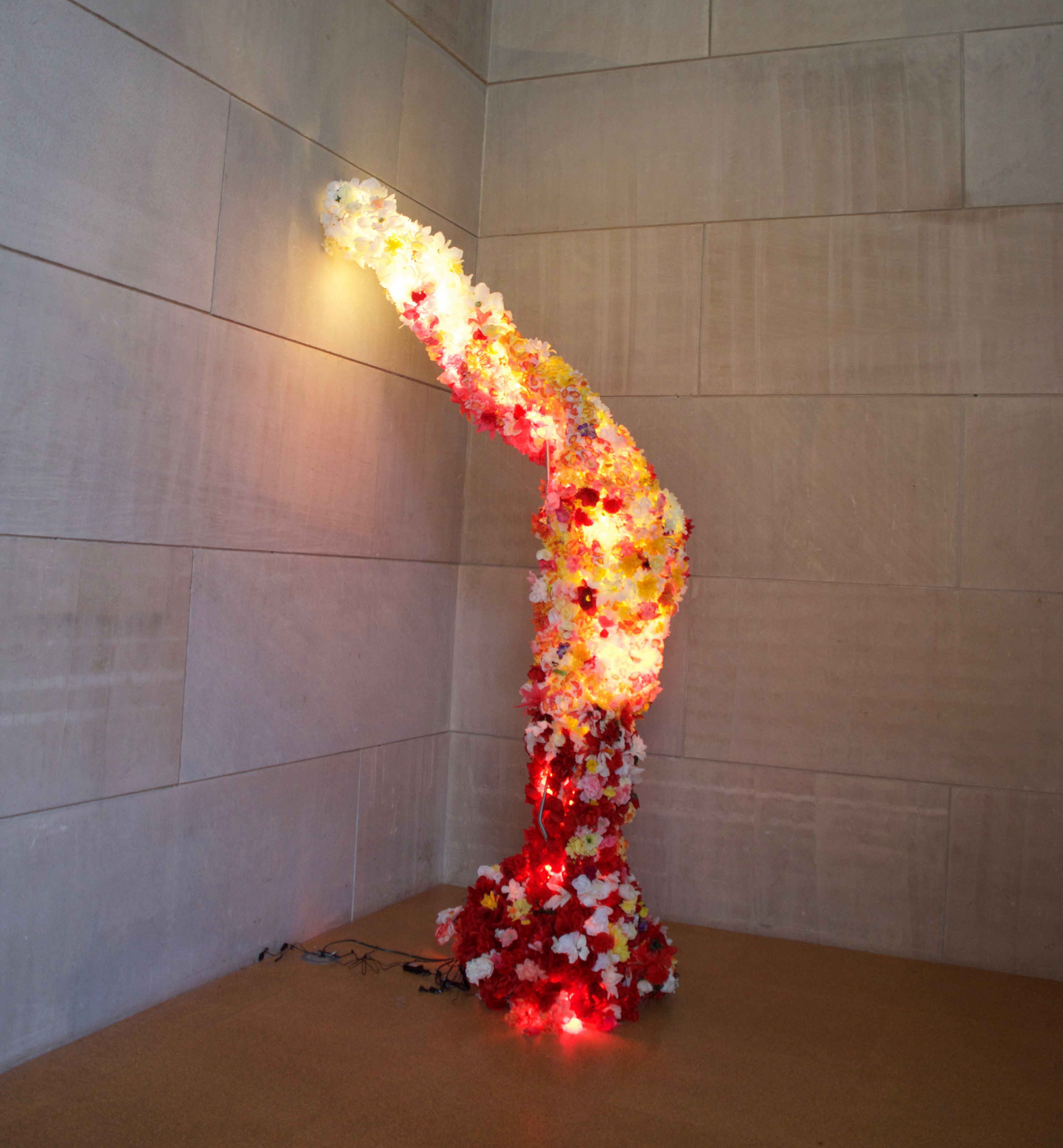
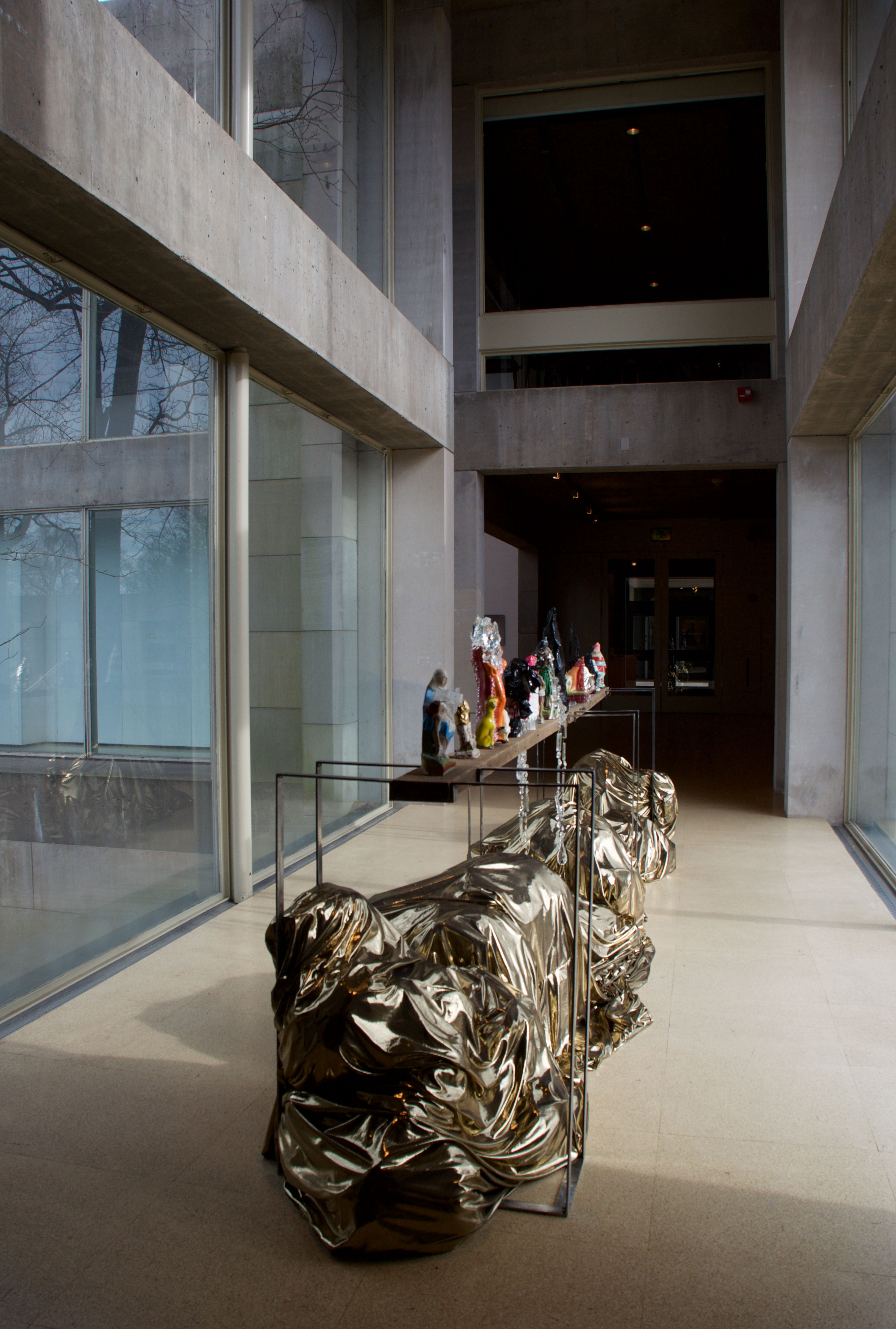
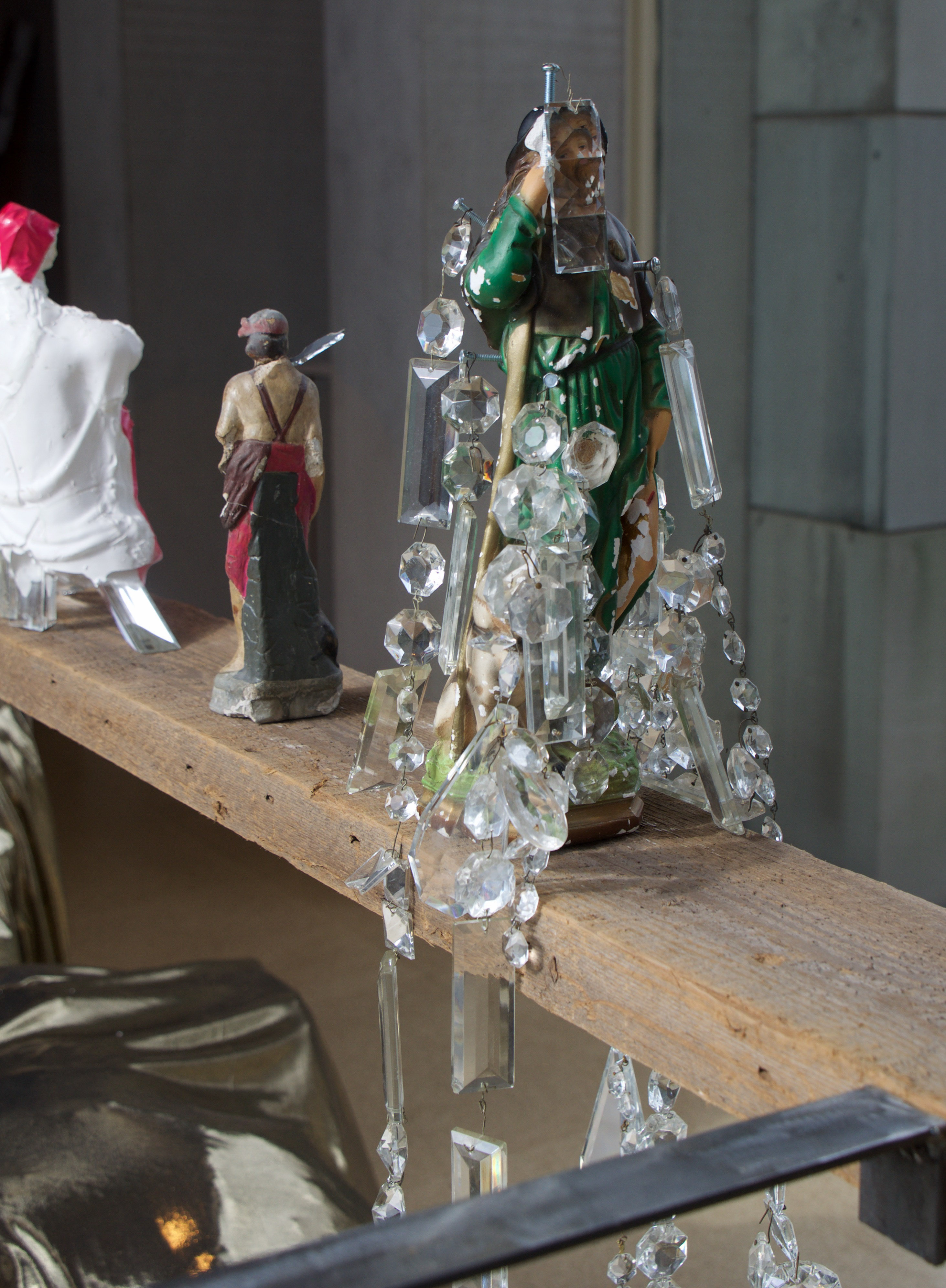
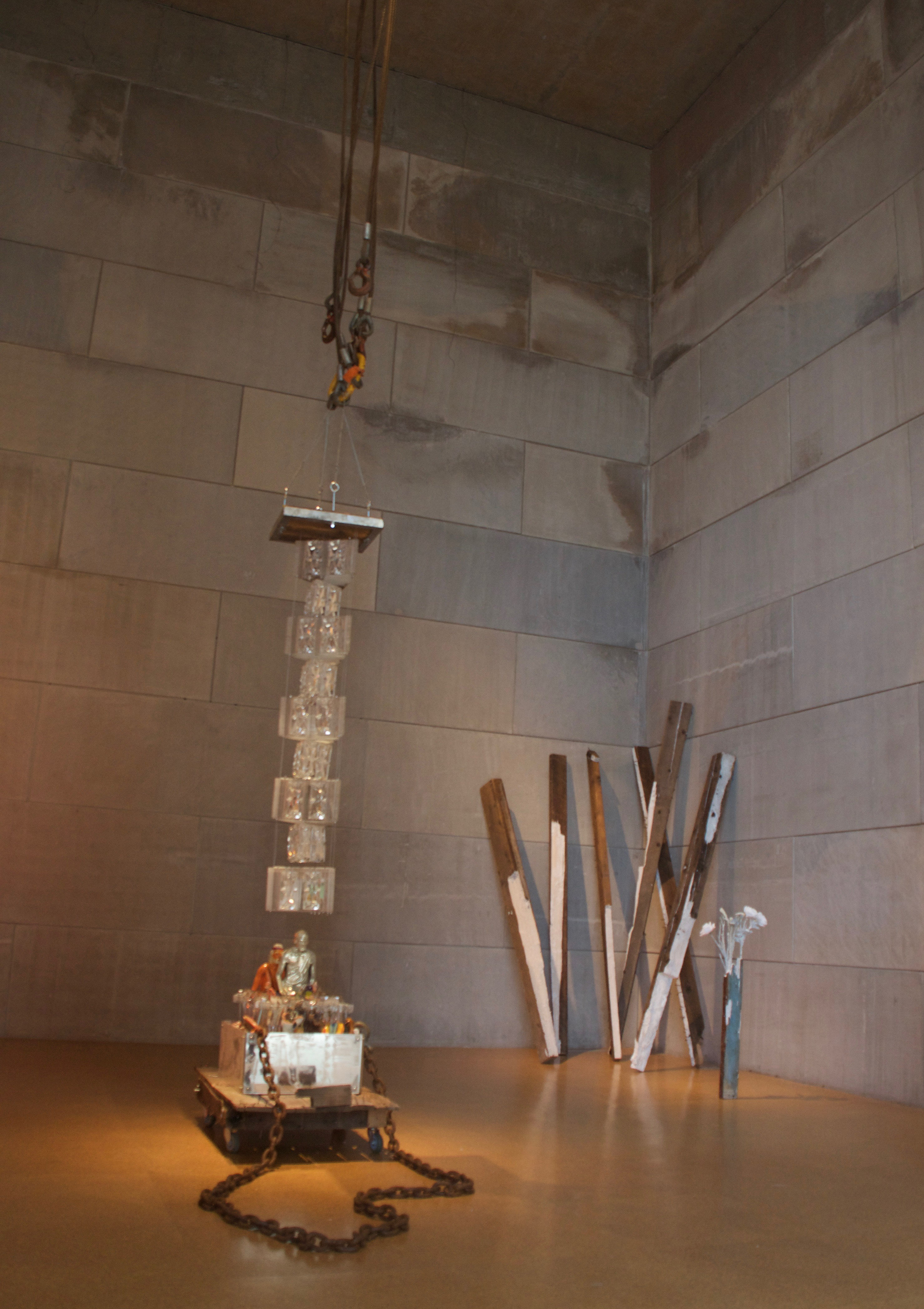
Comments are closed